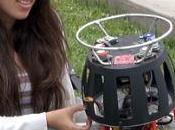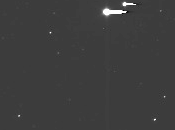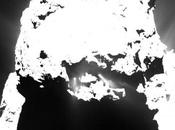I futuri coloni potranno ammirare aurore extraterrestri ad occhio nudo dalla superficie di Marte. A confermarlo, una simulazione ricreata da un gruppo internazionali di scienziati della NASA, dell'Institute of Planetology and Astrophysics of Grenoble (IPAG), dell'Agenzia Spaziale Europea ESA e dell'Aalto University in Finlandia.
Le aurore sono uno dei migliori spettacoli che ci offre il nostro pianeta. Si formano per l'interazione delle particelle cariche provenienti dal Sole con la ionosfera terrestre. Tuttavia, non sono una prerogativa del nostro mondo ma si tratta di fenomeni piuttosto comuni in tutto il Sistema Solare: risplendono, ad esempio, anche su Giove e su Saturno.
Marte, però, non dispone di un campo magnetico globale ma ha campi magnetici locali, concentrati soprattutto nell'emisfero sud, resti di quel campo magnetico scomparso che un tempo avvolgeva il pianeta. Per cui, le tempeste magnetiche che lo investono possono trasformarsi in aurore solo in corrispondenza di questi "ombrelli" magnetici.
Nel 2005, diverse osservazioni dello strumento di imaging SPICAM a bordo della sonda dell'ESA Mars Express, confermate quest'anno dalla missione MAVEN della NASA, avevano fatto ipotizzare che le aurore marziane, tipicamente nell'ultravioletto (anche perché nessuna delle missioni esistenti ha spettrometri nell'intervallo del visibile per l'osservazione dell'atmosfera N.d.R.), avessero una loro controparte nel visibile.
Ora, è arrivata un'ulteriore conferma: modelli matematici ed esperimenti di laboratorio hanno dimostrato che le aurore su Marte, se sufficientemente intense, potrebbero essere viste ad occhio nudo.
Sarebbero variopinte proprio come sul nostro pianeta dove i colori vanno dal verde al rosso, per l'eccitazione dell'ossigeno atomico, ma predominante sarebbe il blu che, generato sulla Terra dall'eccitazione di azoto molecolare ionizzato, su Marte avrebbe forti emissioni a 412 nm e 434 nm, prodotte dall'impatto di elettroni sull'anidride carbonica.
Il risultato è stato ottenuto grazie ad un simulatore chiamato Planeterella, un evoluzione della cosiddetta " terrella" (piccola terra), utilizzata per la prima volta all'inizio del novecento dallo scienziato norvegese Kristian Olav Birkeland per dimostrare i meccanismi delle aurore.
Di Planeterella ne esistono 17 in tutto il mondo. Lo strumento usa un campo magnetico, particelle cariche ed una sfera. Per questo studio, il gas atmosferico terrestre è stato sostituito con CO2, principale componente dell'atmosfera di Marte.
Chissà quali astronauti potranno osservare e documentare per primi l'aurora marziana: se, infatti, la NASA ha in programma di sbarcare sulla superfice del Pianeta Rosso nel 2030, altre iniziative sono in gran fermento e potrebbero raggiungere per prime l'obiettivo .
Prediction of blue, red and green aurorae at Mars [abstract]
The upper atmosphere of Mars is a laboratory for better understanding the planetary atmosphere evolution, and is an example of the interaction of the solar wind with an unmagnetized planet that has only patches of crustal magnetic field. In that context, several space missions were launched to study the Martian environment and its aurorae, notably ESA's Mars Express discovered the first aurora-like structures, and more recently NASA's MAVEN, which is dedicated to understand the atmospheric escape. However, none of the existing missions have spectrometers in the visible spectral range for the observation of the upper atmosphere and the aurorae, but there are UV spectrometer which can be used to infer visible aurora emission. The UV aurorae on Mars have a counterpart in the visible spectral range which should be detectable under the right conditions. We discuss what are the most favorable conditions to observe these aurorae discernible with the naked eye. In this paper, we simulate the Martian aurora in the visible spectral range both with an experimental setup (the Planeterrella, which we use to measure intensity with respect to the naked eye) and with a numerical ionosphere simulation model (Trans⁎/Aeroplanets). We show that the electron impact on CO2 produces strong emissions at 412 nm and 434 nm, i.e., in the blue part of the visible spectrum which are due to the CO2+(A) Fox-Duffendack-Barker bands. The modeling of the electron transport at Mars shows that these blue emissions as well as the emissions of the 630 nm (red) and 557.7 nm (green) lines of atomic oxygen may be observable several times during a solar cycle during strong solar events. The absence of visible spectrometers dedicated to these observations onboard existing space missions and the location of the different Martian rovers, far from the vertically aligned crustal magnetic field lines of Mars, have prevented so far the observations of such an aurora. In the foreseeable future, two missions may help observing these aurorae: the exo-Mars/Trace Gas Orbiter mission will carry a visible spectrometer which could be used to detect these events in the visible spectral range. NOMAD (Nadir and Occultation for Mars Discovery) will carry a UV-visible spectrometer in the 200-650 nm range.





